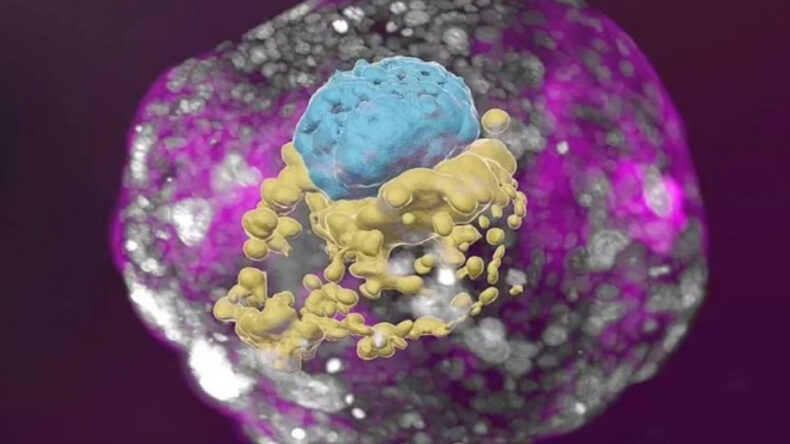In a groundbreaking development, scientists at Israel’s Weizmann Institute of Science have successfully created human embryo-like structures in a laboratory setting, without utilizing sperm, eggs, or a womb. Led by Professor Jacob Hanna, the research team has achieved a remarkable milestone by growing these embryo models outside the womb for up to 14 days. This breakthrough has generated significant excitement in the scientific community, offering new possibilities for research on miscarriage, birth abnormalities, and infertility.
The Innovative Approach
What sets this research apart from previous endeavors is the innovative use of chemically altered embryonic stem cells, as opposed to genetically modified ones. This approach has led to the creation of models that closely resemble real human embryos, complete with essential features such as a yolk sac and amniotic cavity. According to James Briscoe from the Francis Crick Institute in the UK, these striking similarities make these models particularly valuable for studying early-stage tissues and developmental diseases.
A Step Towards Understanding Human Development
The Weizmann Institute’s study marks a significant step forward in our understanding of human development. These embryo-like structures are not genuine embryos, as emphasized by both the study’s authors and independent experts. However, they do provide a remarkable simulation of the in-utero environment, offering insights into early-stage tissue formation and cellular differentiation processes.
The Importance of Regulatory Frameworks
It’s crucial to note that this study has not yet undergone peer review, underscoring the need for a strong regulatory framework in the field of embryo research. While this breakthrough is undeniably exciting, ethical considerations and oversight are paramount. Importantly, the Weizmann Institute’s research does not involve implanting these models into human or animal wombs or allowing their development beyond the 14-day mark, highlighting the responsible approach taken by the scientists involved.
Advancements in Human Embryo Models
The Weizmann Institute’s achievement is part of a broader trend in the field of human embryo models. Recent work in this area demonstrates the increasing complexity and accuracy of these models in mimicking developmental processes. Darius Widera, a specialist in stem cell biology at the University of Reading, suggests that the study, along with other related research, showcases the growing sophistication of human embryo models.
Implications for Medical Research
The potential applications of this breakthrough are far-reaching. By creating embryo-like structures that closely mirror real human embryos, scientists can gain valuable insights into the early stages of human development. This, in turn, can advance our understanding of various medical conditions, including miscarriage, birth abnormalities, and infertility.
Miscarriage Research: The ability to study early-stage embryos in a controlled environment may lead to breakthroughs in understanding the causes of miscarriages. Researchers can investigate factors that contribute to developmental abnormalities and potentially identify interventions to prevent them.
Birth Abnormalities: Human embryo models can serve as a powerful tool for studying birth abnormalities. By examining the development of these structures, scientists can unravel the underlying genetic and environmental factors that lead to congenital conditions, offering hope for early diagnosis and intervention.
Infertility: Infertility is a complex issue that often involves early-stage embryo development. These models could shed light on the intricacies of human fertility and help in the development of more effective fertility treatments.
Ethical Considerations
As the field of human embryo modeling progresses, ethical considerations become ever more critical. The Weizmann Institute’s study serves as a reminder of the delicate balance between scientific exploration and ethical boundaries. While these models offer invaluable insights, it is crucial to maintain rigorous oversight to prevent any misuse or ethical violations. Striking this balance is essential to ensure that the research continues to benefit humanity while upholding ethical standards.
Future Directions in Research
Looking ahead, the Weizmann Institute’s groundbreaking work paves the way for exciting possibilities in various domains of medical research. Researchers can now explore the intricacies of human development with greater precision. Future studies might focus on refining these models further, perhaps extending the timeframe for observation beyond 14 days or investigating specific developmental pathways in more detail. Additionally, collaborative efforts among institutions and scientists worldwide will be essential to harness the full potential of this research and translate it into practical applications, ultimately improving our understanding of early human development and its associated challenges.
Conclusion
The Weizmann Institute’s groundbreaking research in creating human embryo-like structures in the laboratory represents a significant leap forward in the study of human development. While these models are not genuine embryos, their striking resemblance to real embryos opens up new avenues for research into miscarriage, birth abnormalities, and infertility. However, it is essential to emphasize the importance of responsible and ethical scientific practices, ensuring that these advancements are made within a robust regulatory framework. As technology continues to advance, the potential for deeper insights into human development and its associated challenges becomes increasingly promising













